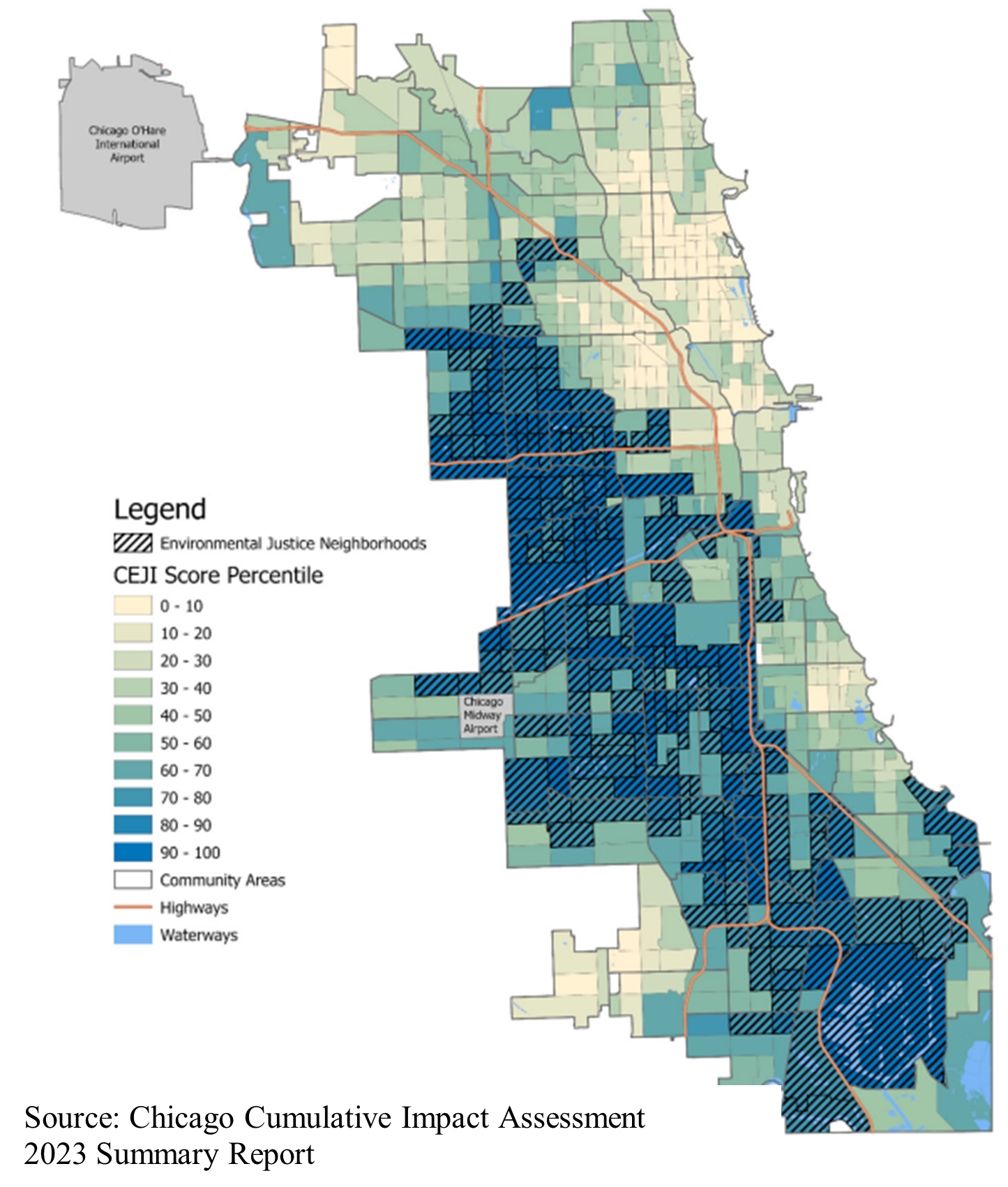Environmental Justice Update: Three Takeaways from Chicago’s Cumulative Impact Assessment
State and local governments have weighed in at increasing frequency in past years. While some environmental issues are global in scope, local governments are progressively engaged on issues affecting climate, waste disposal, and environmental justice (EJ).
The City of Chicago’s Department of Public Health and Office of Climate and Environmental Equity, along with community partners from the Environmental Equity Working Group (EEWG), released findings and recommendations from Chicago’s first Cumulative Impact Assessment. Below, we break out how the assessment came to be and provide three takeaways for regulated businesses to watch going forward.
How We Got Here
Chicago has a long history of both heavy industrialization and also racial complications within their political environment. Accordingly, multiple EJ issues affecting Chicago have been on our radar:
- In July 2022, we discussed a Biden Administration civil rights finding against Chicago related to the relocation of a large metal recycling facility from Chicago’s Lincoln Park neighborhood to an environmentally overburdened community on Chicago’s southeast side.
- In June, we discussed how Chicago’s settlement with federal regulators required it to design and conduct a community impact assessment describing ““how environmental burdens, health conditions, and social stressors vary across Chicago, and identify neighborhoods that experience the greatest cumulative impacts.”
- And in August, we discussed how resolving EJ issues — without permitting reform at the federal level — likely requires significant cooperation from state and local regulators.
The Assessment
The result of a 15-month project to provide data on environmental justice issues across Chicago, the assessment contained a wide-ranging set of policy initiatives, proposed regulatory frameworks, and goals regarding pollution prevention, transportation planning, and data collection.
Using data collected about localized environmental conditions, socioeconomic factors, and rates of environmental exposure and sensitive population groups, the assessment created a metric it calls the Chicago EJ Index Score for each census tract in the city, with higher scores suggesting greater environmental burden. The resulting map demonstrated that neighborhoods located on the South and West sides of the city were the areas of greatest concern.

The assessment labels neighborhoods whose Index Scores are 75 or greater (or whose Score is 70 or greater if they are contiguous with another neighborhood with a score of 75 or greater) as “EJ Neighborhoods.” These neighborhoods are often located in areas with “high concentrations of industry,” bisected by major highways, or both.
The findings — and the methodology used to construct the assessment — has come with its fair share of controversy, however. Notably, the map did not consider proximity to the city’s industrial corridors. A recent Chicago Tribune article highlighted those inconsistencies, including neighboring tracts separated by one street receiving percentile rankings nearly 60 points apart. On its end, the city encouraged people to “zoom out” when looking at the map, and analyze larger regional trends rather than scrutinizing individual neighborhoods. The assessment recommends that Chicago:
- Strengthen Business Regulation and Enforcement. Develop conditions to attach to air quality pollution control permits, create new operational rules for higher impact facilities, and update guideline for inspection and enforcement activities.
- Expand Community Involvement in Decision Making. Provide residents of EJ neighborhoods with increased opportunity to participate in decision-making process, and review community engagement standards for planned developments.
- Change Where and How Development Happens. Update zoning regulation, evaluate proposed sites for multi-family developments, and fund organizations to provide city-wide capacity related to climate resiliency, environmental justice, housing, and transit equity.
- Add Additional Pollution Mitigations. Increase landscaping/environmental protection requirements for industrial properties and update the Calumet Design Guidelines and the Chicago Sustainable Development Policy.
Takeaways for the Regulated Community
Looking forward, the assessment describes goals for Chicago related to ongoing data collection, analysis, and dissemination; increased accountability for policy changes; and more robust systems for community engagement. The assessment promises to be an important launching pad for the city’s EJ efforts, and presents several important takeaways for regulated businesses:
- There’s no substitute for community involvement. The assessment’s pointed focus on enhancing communities’ role in decision making means regulated businesses need to be proactive in building positive relationships in communities where they intend to operate. In essence, EJ activities at all levels enable neighbors to be your regulators.
- Local EJ involvement emphasizes that federal primacy in the regulatory space is ending. Chicago’s assessment is one of the latest among a series of state- and city-level EJ regulations and initiatives which have been issued. We touched on trend here and as yet, there is no sign of it slowing down. Chicago’s creation of its own EJ scores correlates with the proliferation of other map-related indices like the federal EJScreen. But here, the local guidance to “zoom out” is a reminder that one database saying a community has no EJ issues doesn’t mean that none exist.
- Finally, businesses need to remain aware of any local EJ-focused regulations which can affect your planned operations. As localities increasingly engage on EJ issues, remaining aware that environmental concerns are being regulated at all levels is important to keep in mind, particularly because local regulations may not result from regulatory processes which frontload consideration of burdens new regulations may pose on the regulated community.
Members of the firm’s Environmental & Energy groups regularly monitor state and federal EJ efforts.
Contacts
- Related Practices
